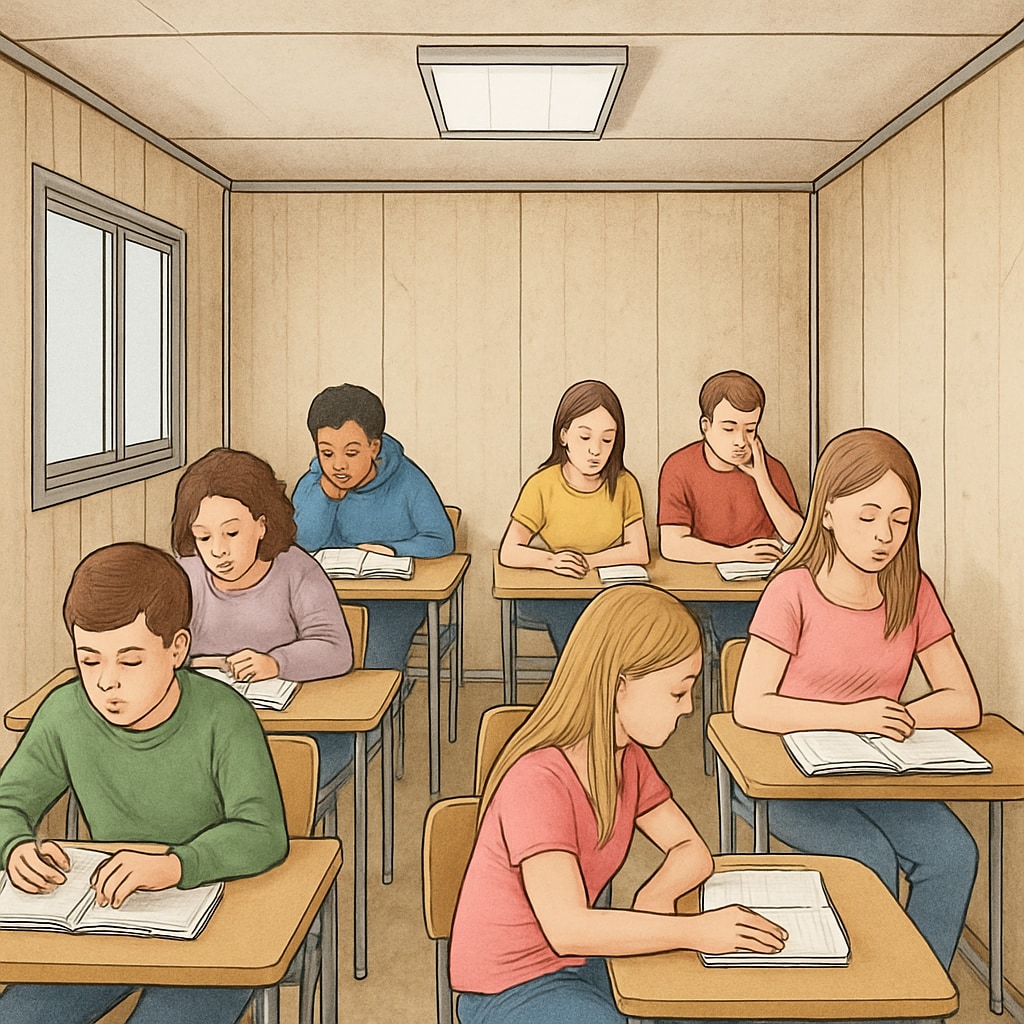School renovations often bring about temporary disruptions to the learning environment, which can significantly affect students’ overall experience. Issues such as makeshift classrooms, reduced play spaces, and limited parental access can challenge children’s adaptability and emotional well-being. In this article, we’ll explore the impact of such changes on young learners and outline effective strategies for schools and parents to support children during these transitional periods.
Understanding the Challenges of Temporary School Environments
Temporary school environments, such as those involving portable classrooms or activity boardrooms, can bring both logistical and emotional challenges for students. The absence of familiar infrastructure, such as playgrounds or well-equipped classrooms, may impact their learning processes and social development.
For example, younger children might find it difficult to adjust to smaller, less appealing spaces, while the lack of proper recreational areas can limit opportunities for physical activity. Additionally, restricted parental access to school premises during renovation periods can further complicate the situation, as children may feel less connected to their support systems.

The Psychological and Academic Impact on Children
Adapting to a temporary school environment can evoke a range of emotional responses in children, including anxiety, frustration, or even excitement. Younger students, who thrive on routine and familiarity, may struggle with the unpredictability of such changes. This could lead to a decline in their academic focus or social interactions.
Moreover, the absence of adequate recreational facilities can impact their physical health and emotional well-being. Lack of playtime opportunities may result in pent-up energy, making it harder for students to concentrate in their temporary classrooms. These factors make it essential for schools and families to collaborate closely to minimize the impact on students’ overall development.
Strategies for Supporting Children During School Renovations
To help children adapt and thrive in temporary school environments, both schools and parents can take proactive steps. Here are some practical strategies:
- Maintain consistency: Schools should strive to replicate familiar routines, such as consistent class schedules, to provide children with a sense of stability.
- Create engaging spaces: Temporary classrooms can be made more inviting with colorful decorations, interactive learning materials, and designated zones for group activities.
- Encourage communication: Teachers and parents should create open channels for children to express their feelings about the changes and seek reassurance.
- Incorporate physical activity: Schools can organize creative indoor exercises or outdoor field trips to compensate for the lack of playgrounds.
- Foster parental involvement: Despite restrictions on access, parents can support their children by staying informed about school activities and establishing regular communication with teachers.

Why Collaboration is Key
The partnership between schools and families is crucial in ensuring that children navigate temporary environments successfully. Frequent updates from schools about the progress of renovations and the measures being taken to maintain quality education can reassure parents and build trust.
Additionally, parents who actively participate in their children’s learning at home can help bridge the gap caused by limited school resources during this period. As a result, children feel more supported and confident in overcoming the challenges of a temporary learning space.
For further insights into how temporary environments impact children, visit Child Mind Institute or Britannica on Child Development.
Conclusion
Temporary school environments during renovations can be a challenging phase for children, affecting their emotional, social, and academic development. However, with the right strategies and strong collaboration between schools and families, children can adapt and continue to thrive. By addressing their needs and providing consistent support, we can turn this period of transition into an opportunity for growth and resilience.
Readability guidance: The article uses short paragraphs, active voice, and accessible language to ensure clarity. Lists are used to summarize key points, and transitional words ensure smooth flow between sections.


